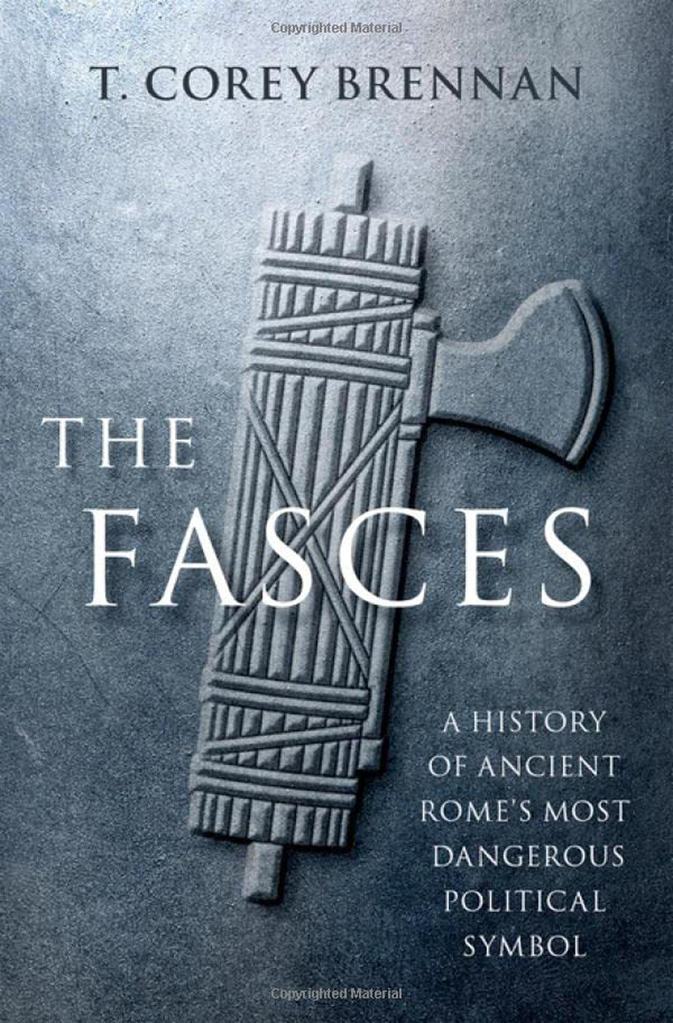
Rutgers University Professor of Classics, T. Corey Brennan, takes his readers on an interesting historical journey from ancient Rome through the modern era in an in-depth history of one of Rome's most enduring symbols of its power, the fasces. The fasces is a bundle of rods with an axe bound together by a leather cord. It was a visual reminder of the state's power to inflict both corporal punishment and capital punishment; thus inspiring respect and awe for the authority of the state and of its representatives.
The first seven chapters serve to provide a detailed account of the history and role of the fasces in ancient Rome. Brennan provides detailed references to classical authors in order to illustrate both the customs surrounding the use of the fasces and the psychological effect it had on those of different social standing in ancient Roman society. Brennan masterfully strings together various anecdotes from ancient Rome to give a full account of the lictor's role and the power of that ancient symbol – the fasces.
The second half of the book details the reception and use of the fasces as a symbol from the Middle Ages through its use in the United States to its use in fascist Italy and up until today. This half of the work is particularly interesting when one considers how symbols can be co-opted and reimagined in different cultural and societal milieu. In a recently independent United States, the framers of that new republic adopted a great deal of ancient Greek and Roman symbols. Thus, one comes to take for granted the presence of two fasces on either side of the Speaker's chair in the chamber of the House of Representatives in the US Capitol. However, this symbol comes to take on a particularly negative connotation when it was adopted as a symbol of fascist Italy by Benito Mussolini – thus inspiring the term fascist. In recent times, the symbol has been coopted once again by white nationalist groups and by members of fringe right-wing extremist groups. As an American, this made for a particularly interesting read in light of the recent Unite the Right Rally in Charlottesville, Virginia or the January 6th attacks on the US Capitol.
This work is certainly of interest to any serious student of ancient Roman history or the reception of ancient Roman symbology in the modern world. It might be too dense and scholarly to use in a wholesale manner in the secondary school classroom, but excerpts could certainly help to inform classroom discussions or a lesson on Roman symbols or governmental authority. It is definitely a valuable work and its relevance in modern political discourse only helps to highlight the value of understanding the history of this ancient symbol.


